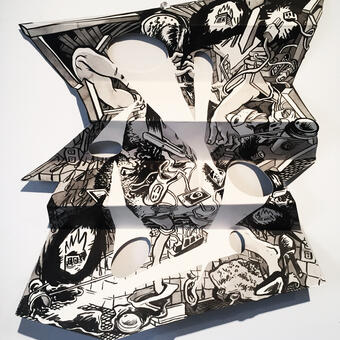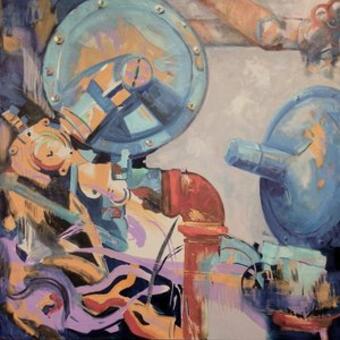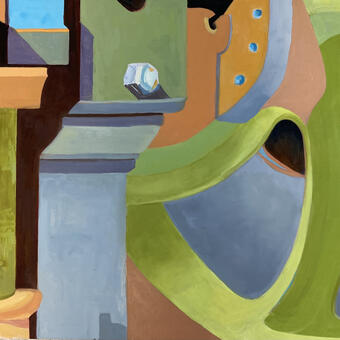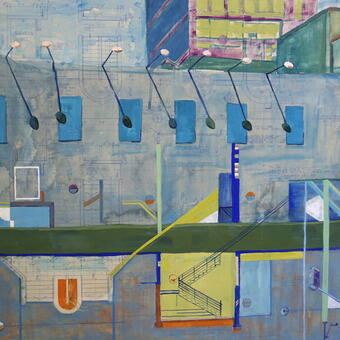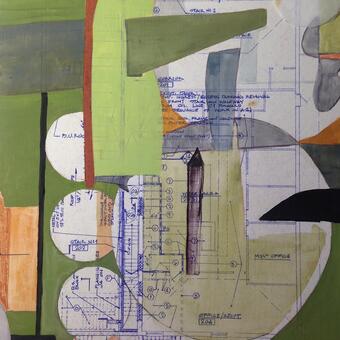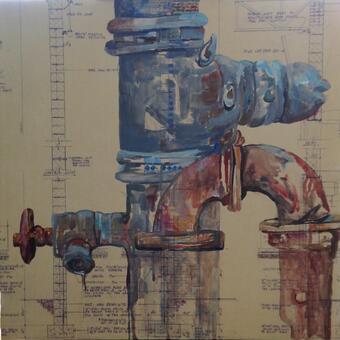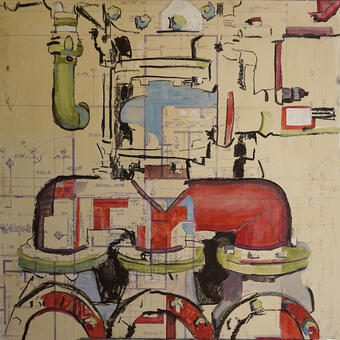Mark's profile
I am a consumer of my thoughts and experiences. Once consumed, I attempt to shape and form these experiences into something that becomes a new experience of it’s own merit, some thing that wasn’t–but now is. I can look at this new thing again and again. I can share it with other people. Each time revisited, it becomes another experience, changing as I change, changing as others respond to it.
The more often I can revisit these things/creations and still see/feel/think something new or deeper, the more I like them–and the more successful I believe they are. Because each day is new and original, each day I wake up hungry to experience it. Eager to pass through it–and let it pass through me–with all its many flavors–all its pain and joy, all it’s confusions and mysteries.
My process of creation, while very intuitive and spontaneous, is not without direction. I often do not start with a specific intention, but rather, I respond to what happens as the process continues. When I feel that the object has begun to separate from me, to breathe on its own, to generate and incite new/original feelings and thoughts from myself (or others) is when I begin to let it go. This separation is never completely fulfilling, because it is in the process of creation that I feel the most alive.
- The abstract beauty/and chaotic order I see in nature.
- The beauty/ugliness of the ordinary.
- The banal–or even trash–of our everyday existence. Light/shadow on a wall, or in the snow.
My inspiration can come from anything. Overwhelmingly, though, my imagery tends to involve natural and manmade environments and objects.
The geometry in nature fascinates me; and though I often search for why, I hope never to find out. I both lose and find myself somewhere amidst the mind-boggling complexity of miles and miles of twigs, branches and roots of a single tree. A broken branch, on the other hand, is divorced from its origins–literally disconnected from the whole. For many reasons, branches get separated from the parent tree. Sometimes the causes and effects are destructive and unhealthy for the tree. Other times, the loss of a branch is necessary for the long-term survival of the tree.
When a branch falls, it contributes back to its habitat, it becomes home to all sorts of insects and animals. As it breaks down further it cycles back into the soil. When I pick up an object and work with it, I violate this natural process. In reality, as with all things, I am only postponing its inevitable decay.
Another common theme in my work is the physical and emotional effects of light and shadow. For me, light feels like a substance–an entity, even. It has the power of life and death over us. It’s absence disturbs us, too much of it can blind or disorient us. Artificial light for me is the ultimate symbol of modern human life. When Edison created the light bulb it not only brought about a dramatic change in human lifestyles, it was a particularly symbolic and intoxicating act of rebellion against the most powerful force of nature–the sun. Centuries before, the woods were dark and mysterious and the big bad wolves threatened our survival. Now we hold the future of the woods and the wolves in our hands. Our species is still as fragile and dependent upon the sun and natural forces as it has ever been, but it seems this reality is often lost in our daily existence as humans on this planet.
I am open to all medium–painting, printmaking, photography, sculpture, mixed-medium, etc. Sometimes changing mediums can help keep things loose and fresh by forcing me to keep things simple and focused; other times it can just show off what I can’t do so well. I guess that doesn’t bother me so much. Over the years I have noticed motifs that repeatedly show up in my work–regardless of the medium used. I hate categorizing, but I guess if things start showing up frequently enough things start to fall into slots–whether I like it or not.
Revised 10/31/2025
